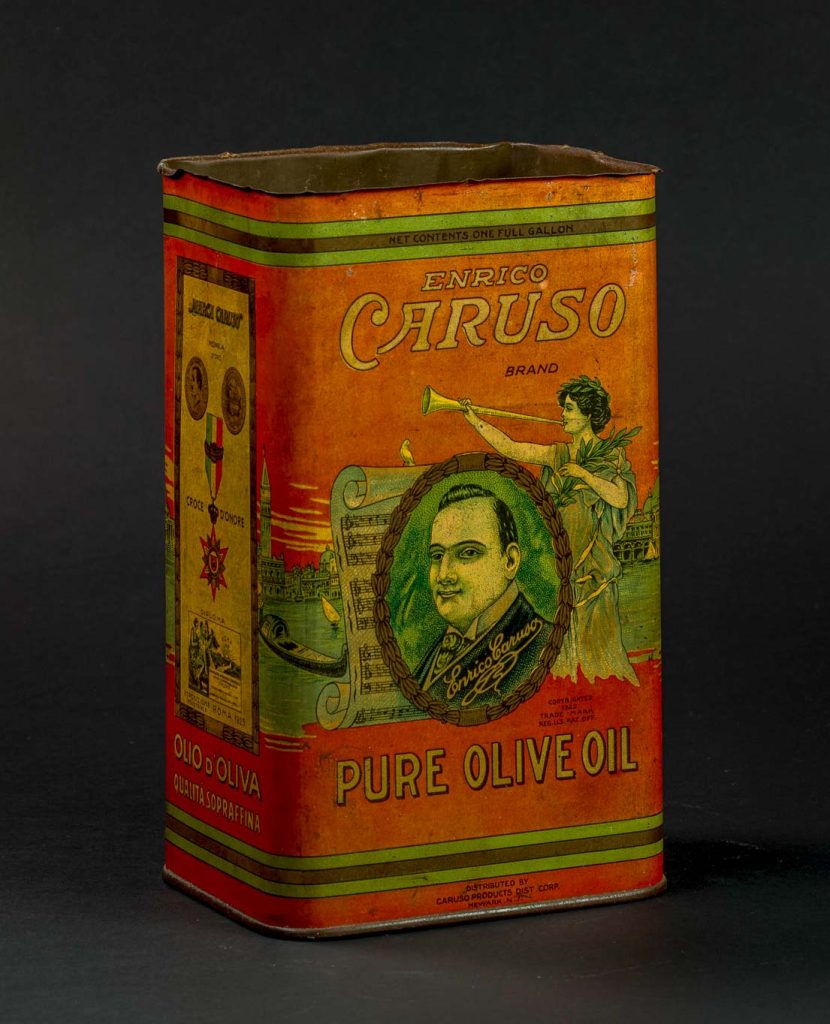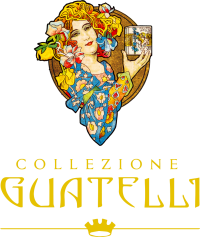MUSEO
COLLE
ZIONE
GUATELLI
History
Italy and Italians - History of the tin production chain
Olive oil, a fundamental ingredient in our cuisine, accompanies the journey of Italian migrants around the world.
The Tin Supply Chain

The development of the lithographed tin industry in the western region of Liguria was the natural consequence of the new oil refining technique, which, starting from the early years of the twentieth century, had made considerable progress. This progress allowed for the domestic consumption of oil, which often turned out to be impure, thereby improving its quality.
To enable its trade beyond national borders, it was decided to produce lithographed tin cans.
Arising from the union of steel with tin, it was obtained by beating the iron sheet associated with baths of molten tin. To make it more appealing to consumers, lithography was applied, defined as “the industrial art par excellence”.
The urgent needs of oil-producing companies drove the production of packaging at a rather rapid pace to meet the ongoing demands.
The first company to provide lithographed tin cans was “Renzetti D. & C.”, which began in 1910. A few years later, another company, “La Solertia”, decided in 1913 to open a plant in Porto Maurizio. In 1925, the birth of “Sasso Latta” was recorded, and subsequently, “La Graph” was created in 1929 by Rocco Guatelli in Oneglia.
When I set foot on land...
…I turned to look once more at the Galileo, and my heart beat as I bid it farewell, as if it were a floating strip of my homeland that had brought me there. It was nothing more than a black line on the vast horizon of the river, but the flag could still be seen, waving under the first rays of the American sun, like a final greeting from Italy entrusting its wandering sons to the new mother.
Edmondo De Amicis, Over the Ocean (1889)

Emigration:
one history, a thousand stories

Immediately after the Unification of Italy, many Italians decided to leave their homeland to seek fortune abroad. Despite the difficulties they would face, for Italian emigrants, leaving their homeland was never to be understood as a rejection of their country of origin. For this reason, many shops and businesses run by compatriots flourished in Italian neighborhoods.
Olive oil, a fundamental ingredient of Italian cuisine, was missing in the new country, so it began to be imported. Initially, simple figures were produced: olive branches, landscapes, symbolic figures; then came distant panoramas such as “Mount Vesuvius”,”The Lighthouse of Genoa,” nostalgic memories such as “O Sole Mio”, “Patria Nostra”, “Mamma Mia” and many others.
Famous figures were also depicted on the tin cans: The Great Geniuses, Giotto, Leonardo, and Raphael; the poets and writers, Ariosto and Carducci; and characters from operas such as Tosca, Othello, and Rigoletto. There was also a rich collection of patriotic figures: Garibaldi, Mazzini, Umberto I, and even members of the royal family.
They also depicted popular events that captivated the word during that time, like the “Nobile” brand, which recalled the unfortunate polar journey of the Italian airship.
Additionally, what made them unique was how they were labeled: the oil didn’t take its name
from the producer, but instead referred to images that somehow reminded people of Italy.
They all had bilingual titles, the interesting phrase “packed in Italy,” and featured the tricolor
flag.
collezione
guatelli




